2. Tony Fretton
Tony Fretton Architects / 1982 - Present
London - UK
‘An Unguarded Art Form’
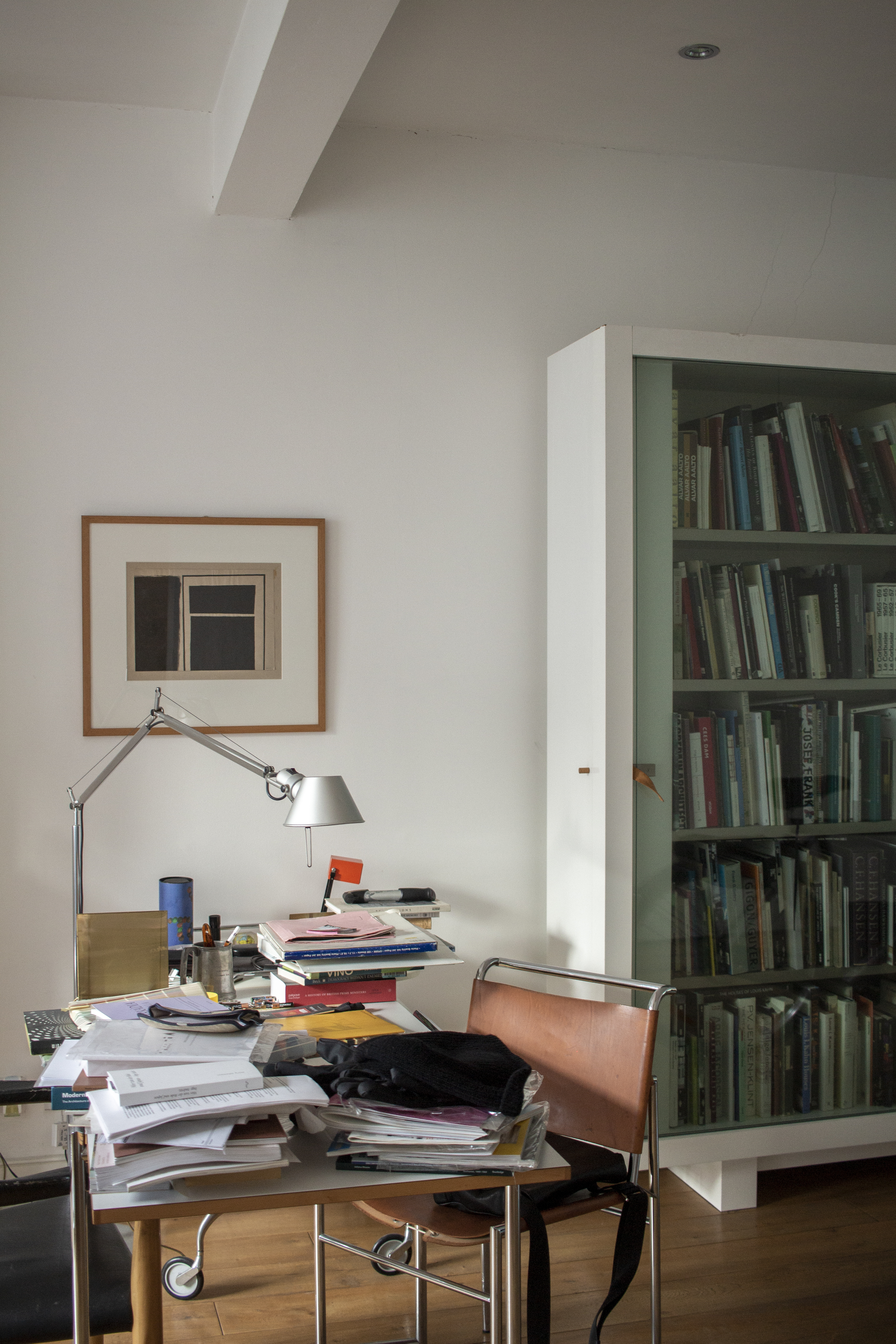
Books have played a significant role in Tony Fretton’s life, whether reading or writing them. You may have heard him talk about them during a lecture, or even been told to read one as a student of his. We were lucky enough to spend the afternoon with Tony, delving a little deeper into his library. An insight into the literature that has been influential throughout his personal life and career.
Graduating from the AA, Tony went on to work for various practices before setting up Tony Fretton Architects in 1982. The award-winning practice has gone on to create a multitude of magnificent buildings, including The Red House, The British Embassy in Warsaw and The Lisson Gallery in London. The practice works across a variety of scales, but always takes a social and civic stance; significantly affecting the material world in which they stand.
Numerous books have focused on the work of his own practice, including ‘Tony Fretton Architects: Buildings and their Territories’, published by Birkhäuser Basel in 2013. This provides a comprehensive overview of the practice’s work, whilst ‘A E I OU - Articles, Essays, Interviews, and Outtakes’ (Jap Sam Books, 2018), provides a critical insight into Tony’s thinking with a collection of “articles on other architects, essays on the historical currents in architecture, interviews in which Fretton lays out the developing bases of his practices, and out-takes: ideas and phrases retrieved from early drafts and unpublished writing.”
Marrying with his writing, Tony has had a longstanding involvement with academia, from being an AA unit Master in the 1990’s, holding the Chair of Architecture and Interiors at TU Delft between 1999 and 2013, as well as currently running a Unit at Cass and being a visiting Professor at the University of East London. This generosity really shines in the interview as Tony talks us through the literature that has influenced his practice, always with a coinciding anecdote or story to match.
Incredibly, Tony is in the process of numbering several hundred of his sketchbooks in preparation for a showcase of his drawings at the V&A. Keep your eyes peeled as it will definitely be worth a visit later this year.

How many books do you currently have in your office?
I don’t know if I could even estimate. Honestly, I couldn’t tell you. Several hundred.
Where do you store them, and how are they organised?
Most of them are in the house. I don’t take books to the office, I find them too personal. I fear that they would be lost.
Art books are in the kitchen and architecture books in the living room. On the staircase, there are some shelves that have got everything else that doesn’t fit into any other category. I’ve had to prioritise the monographs, the ones that are worth something, in that bookshelf [points to the living room]. I get given books all the time and it drives me crazy. Some of them I read, some of them I store, some of them I sell!
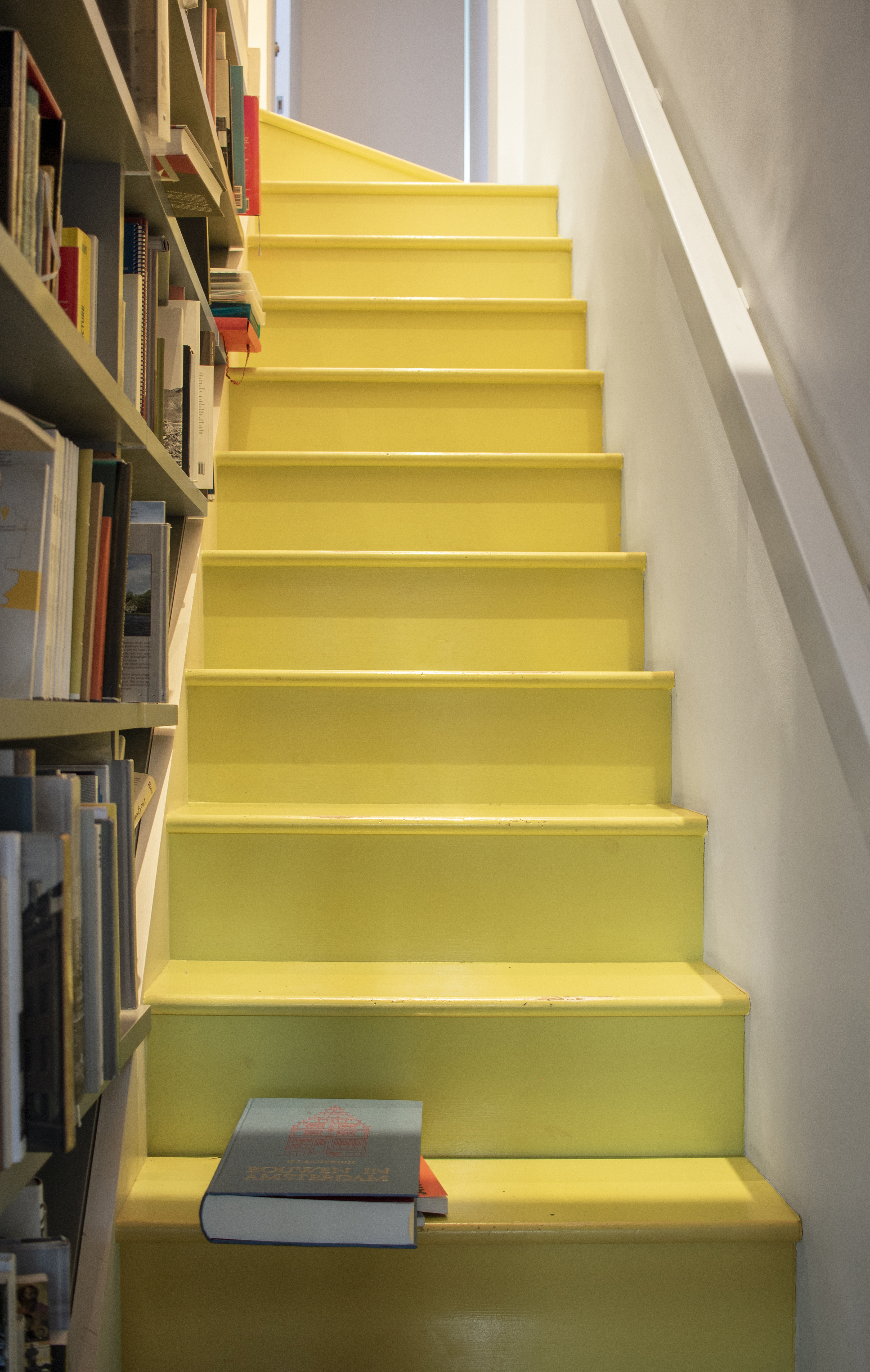
“If you like architecture books: you have to buy them when you see them, putting your credit card down and closing your eyes. Buy them because they go out of print so quickly.”
Everybody I know who is a serious collector of books is always buying and selling them. When I was at Delft, a friend of mine, the professor of History, had an entire room full of books. When I went to Joseph Rykwert’s house, it’s exactly the same - every surface covered with books. Robert Steiger, the editor of our Birkhäuser Monograph, a fantastically charming man, was an architectural editor/writer and his wife was a professor of English. They had books everywhere. It was really charming. They had everything, including English poetry, and I read a WH Auden poem to them, very slowly
I designed the bookcases for the apartment I lived in Soho, which was a completely different shape. When I arrived here I had to decide where to put them. Now the one made of clear polycarbonate is in the dining room-kitchen, where it enjoys beautiful light.
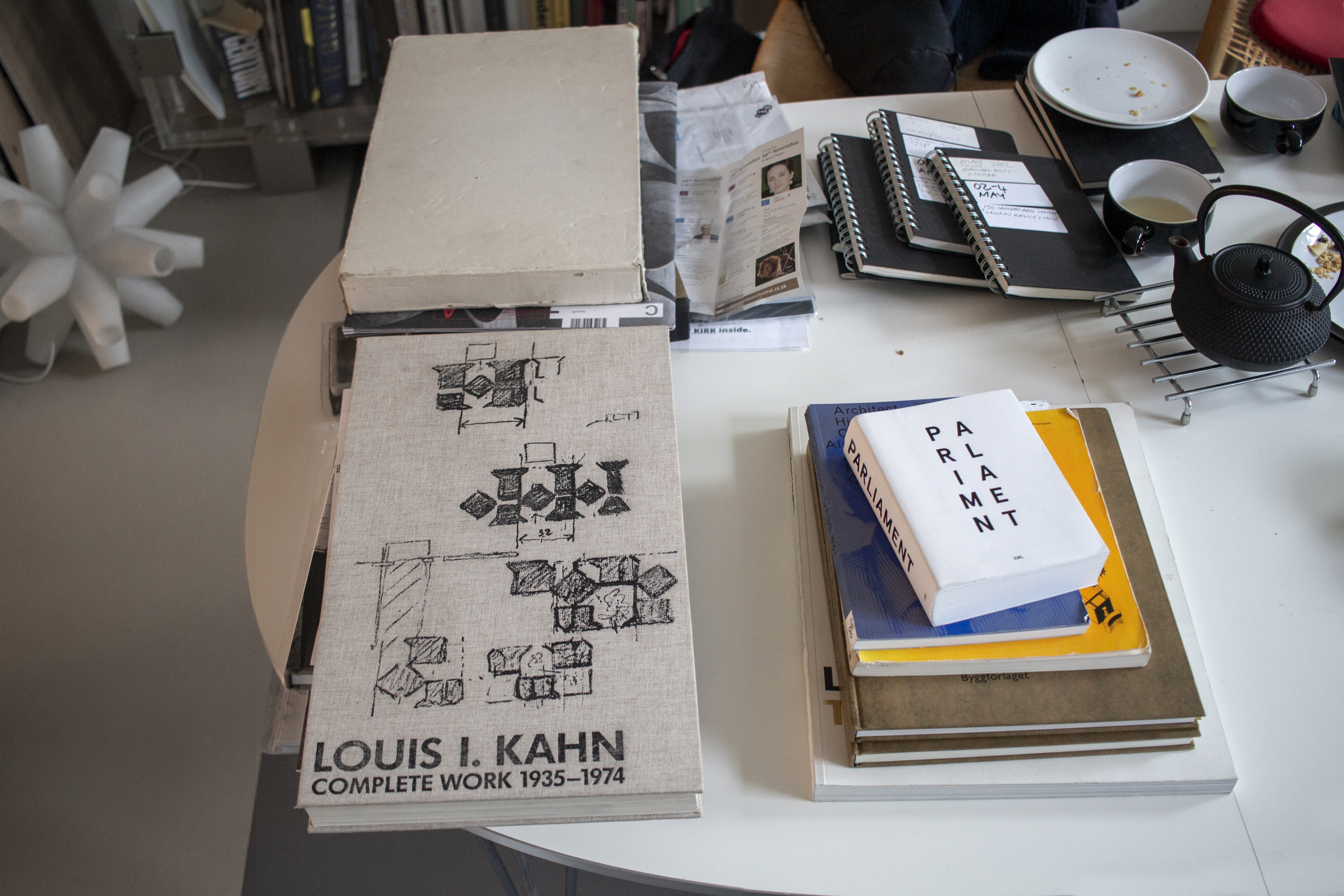
What has been the most influential book throughout your time practicing as an architect?
Louis Kahn. His amazing book of sketches. Its format is crazy, end on [portrait], so that you can’t read it on your lap. It has Kahn’s sketches of all of his projects with photographs. I remember buying it in Germany on my way to Austria to give a lecture. It beckoned to me from a lovely bookshop and I had to have it. It weighs a tonne and I’d also bought a pair of walking shoes on the trip. I carried them both all the way back to London, where I found it was also on sale. If you like architecture books: you have to buy them when you see them, putting your credit card down and closing your eyes. Buy them because they go out of print so quickly. I have a wonderful double volume Lewerentz book that you can’t get anymore. One volume has the drawings and the other photographs of the buildings, all in chronological order with the work getting more abstract over time. There’s a great photo of Lewerentz inside looking incredibly naughty. He moved from Stockholm to Lund where it’s slightly warmer when he got older.
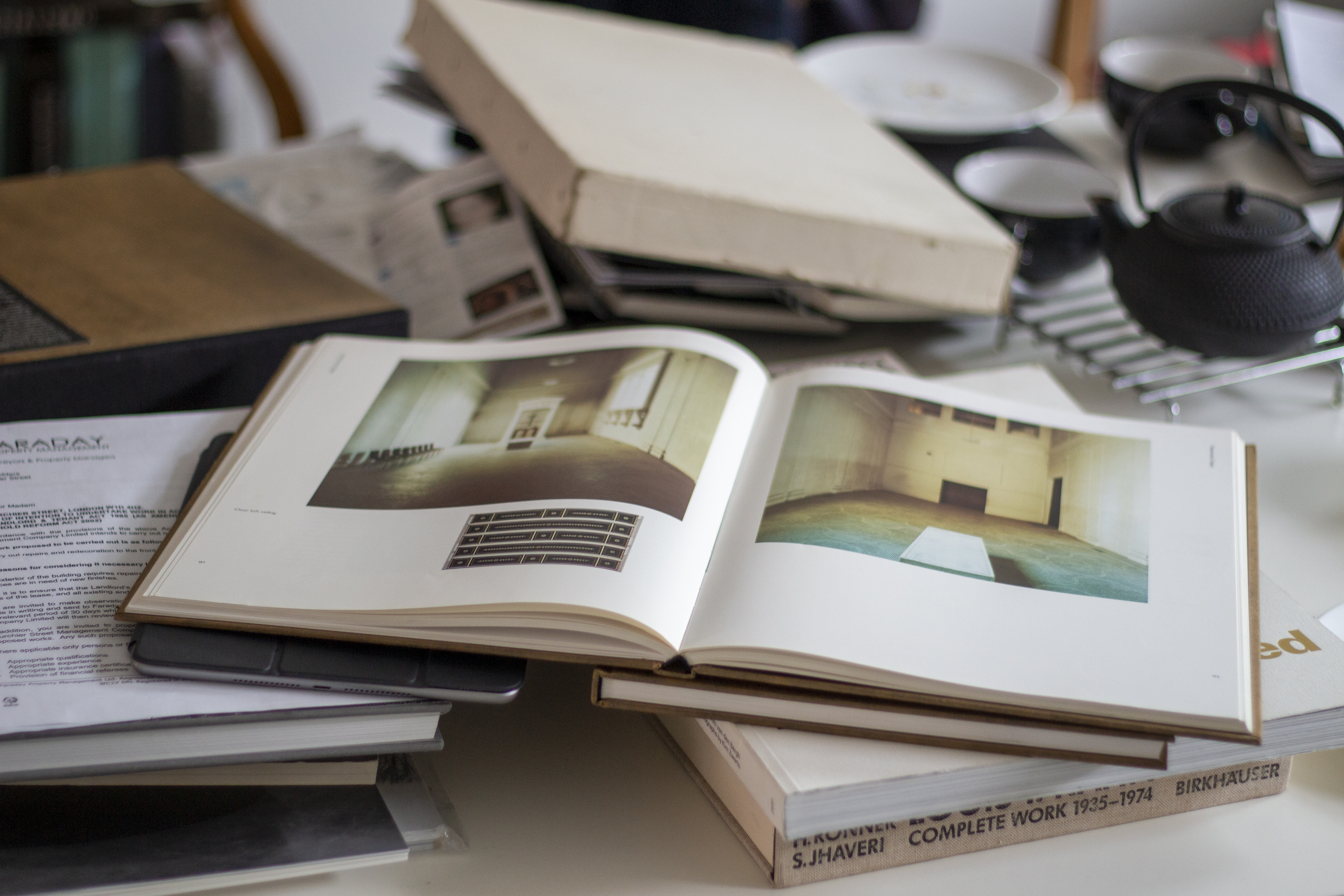
There’s a famous photograph of him in the extension that Klas Anshelm made in his house for Lewerentz’ retirement with only a roof light. Lewerentz is reputed to have said ‘this is how people think I live but actually I would have liked a window.’ Lewerentz’ work made a reappearance when I was teaching at Delft. Architects go out of fashion and are then rediscovered by a new generation. That rediscovery by Dutch architects took place in the magazine called OASE, run by a changing group of writers/practitioners. Each cover is designed by the atelier of the renowned Dutch designer Karel Martens. In his Atelier he trains graphic designers. Each graphic designer gets a chance to design a cover of OASE. We made a book together for Navado Press with Karel on ‘Designing the Warsaw Embassy’.
Another great favourite of mine is Alan Colquhoun’s, ‘Essays in Architectural Criticism’. A great classic. The writing is beautiful. OASE did a full issue on his life and work. Oase’s method is to publish a theme and invite abstracts, which are reviewed and selected. Richard Hall from East Architects was selected in that way to write an article about architectural drawing from the 80s and 90s, which turned out to be my architectural drawing from the 80s and 90s.
The Housing Chair in Delft produces very good books on housing in a series called Dash, which, perversely they decline to publish digitally and do not distribute outside the Netherlands. It's a real shame.
This book, ‘Parliament’ is by David Mulder and his co-writer, who graduated from my Chair at Delft. It reviews different parliament buildings and the political consequences of their layout, in a very interesting way.
How do you work with books? Do you take notes, annotate, read aloud, draw...?
I absorb them. I don’t directly quote from them. To innovate you must absorb and change. Francis Bacon would buy a book because he would see one image he wanted to use. It’s shocking but he just tore it out and threw the rest of the book away. There’s a very famous photo of his studio, covered in ripped-out images. He knew what he wanted and discarded the rest. There’s a great interview with Jasper Johns by David Sylvester at a time when art critics thought they could dictate to an artist. Sylvester highlighted that there seemed to be a lot of things Johns didn’t want to do, to which he replied, ‘I know what I don’t want to do and that’s a lot to know!’ To know that is to be on the path to originality.
“Le Corbusier remarked ‘after a while you somehow have enough going on inside you to not need to look at what other people are doing all the time’. But in truth I am always looking.”
Where do you find the books you collect?
The AA Bookshop is very good. I also used to get a lot on my travels. When I was in New York in the 1980s, I went to the wonderful book shop of Jaap Reitman, which is not there anymore, unfortunately. It was a loft full of second-hand books. I got a Charlotte Perriand book there which I’ve never seen anywhere else. I’ve bought books in Cologne at Walther Koenig’s fabulous shop, well ahead of everybody’s taste. I found Dan Graham books in there that I really treasure.
But I’m not buying books so much anymore. I’m exhausted in a way. Early in Kahn’s career, he was obsessed with Le Corbusier’s ‘Œuvre complète’ but one day he just stopped looking at it. He remarked ‘after a while you somehow have enough going on inside you to not need to look at what other people are doing all the time’. But in truth I am always looking. Currently, it is Jan de Vylde because I think he’s extremely original. When you see a generation doing something completely different from you, but they recognise the importance of your own work, which is how it is with Jan, that is really pleasing.
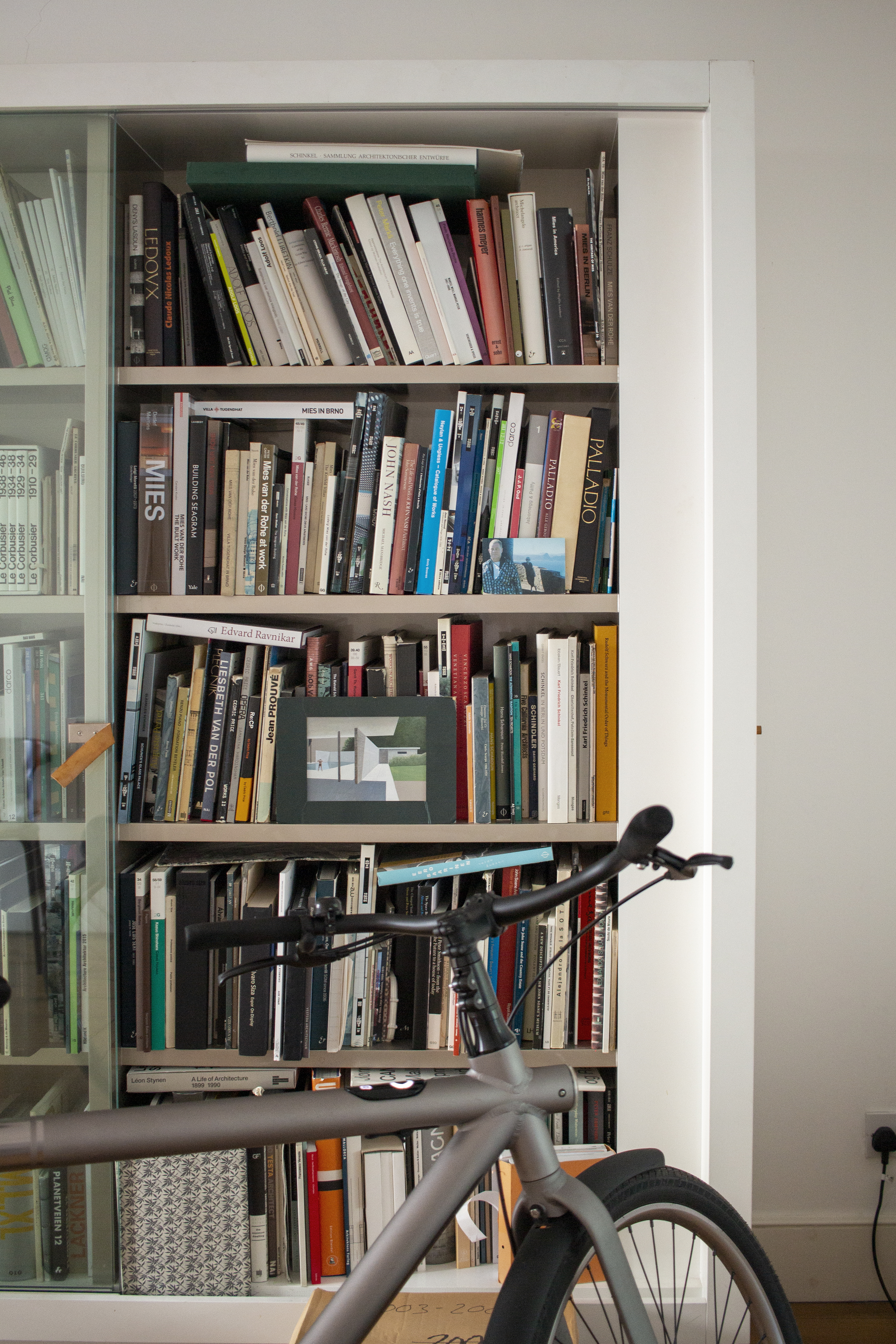
If you could re-discover one book, what would it be?
A book that should be written and hasn’t been is about a Dutch architect from the 17th Century called Philips Vingboons. I’ve only ever seen an antique book about him. I’ve had a look to see if there is another book on his work but there isn’t. There are some architects that really need a book and nothing else will do. Another example is James Gowan. Stirling has had a substantial body of writing by Charles Jencks, Robert Maxwell... but apart from Mark Crinsom, Gowan has been rather overlooked
After seeing and liking his work in Sri Lanka I found an impressive comprehensive book on Geoffrey Bawa. If I am struck by someone’s work I buy all the books on them that I can. If there is an exhibition on their work I will go to it and buy the catalogue.
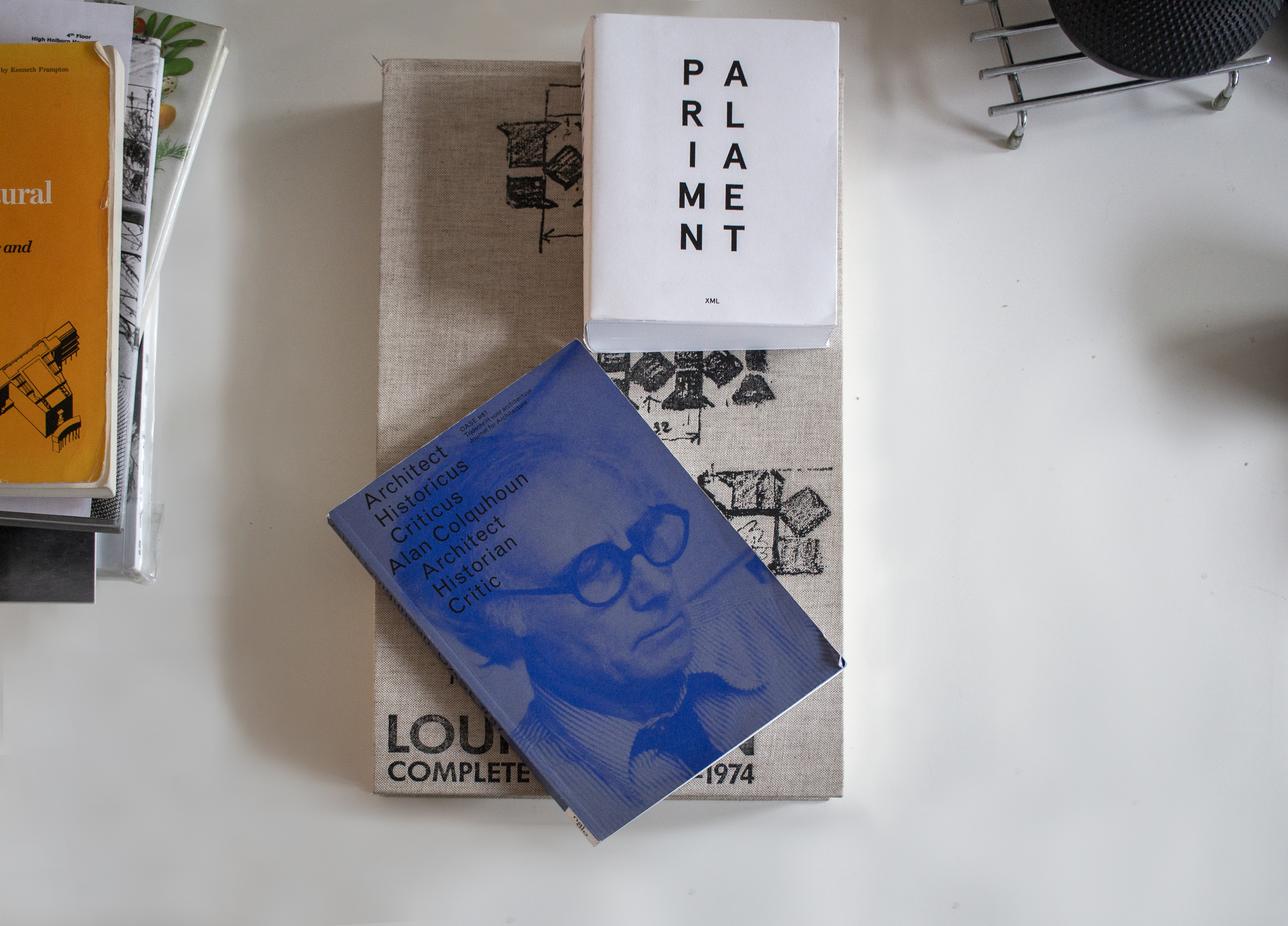
“I try to get students to gather from other architects what suits them, to help them shape their own sensibility. Architecture is the most generous art form, it is unguarded.”
What book would you recommend every young, aspiring architect to read?
Whether they would read it or not, I would recommend ‘Essays in Architectural Criticism’ by Alan Colquhoun. It is beautifully written. When you are studying architecture, you do not have the apparatus that develops as your career progresses. I do make suggestions to my students of architect and theoretical texts to study but only if I think they would illuminate the path down which they are heading.
I try to get students to gather from other architects what suits them, to help them shape their own sensibility. Architecture is the most generous art form, it is unguarded. But you have to get through a student’s reluctance to borrow; they often feel that they’re not being original. Recently, I was in Ghent and on the jury for a drawing competition and a very interesting conversation developed with Dirk Somers of Bovenbouw. He said that he doesn’t sketch at all, but talks about buildings he likes and borrows from them, including mine and then transforms them so deeply that they become his!
All photography by Tim Lucas
Website
